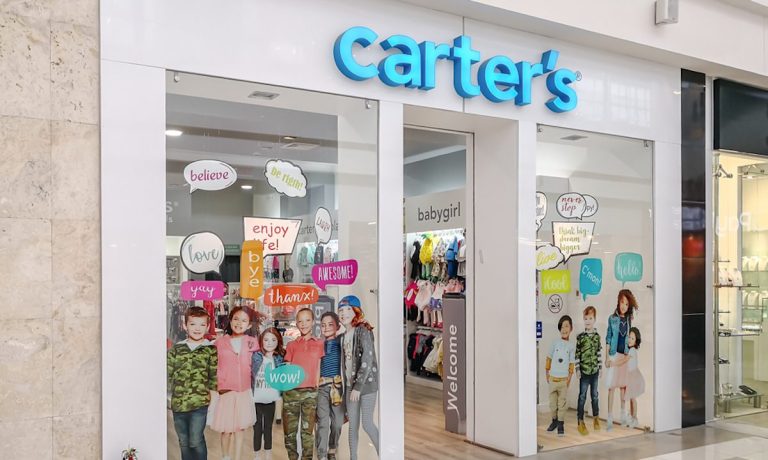CEO Michael Casey noted that the sales bump from the child tax credit, which began on July 15, was “relatively short-lived, and it was obviously a smaller benefit than the stimulus check that was received earlier this year,” with business picking up for about a week or so before settling back down.
Still, Casey said the “nice thing” about the new child tax credit is that it encompasses five more monthly payments for the rest of the year, as well as additional funds coming to families early next year when taxes are filed. “So, we’ll continue to see whether or not that continues to benefit us in the balance of the year, but it’s a meaningful benefit for families with young children,” he said.
The CEO added that Carter’s is also optimistic about the number of children born in the U.S. so far this year. The Centers for Disease Control and Prevention (CDC) had previously projected that births would be down by between 8 percent and 14 percent because of the pandemic, but the latest data suggests that births are only down 5 percent so far.
“With the continued benefit of government stimulus, incuding the enhanced child tax credit, we may see a moderation in the decline in births,” Casey said. “That would be good for our country and our company.”
In the second quarter, Carter’s net sales were $746 million, up 45 percent year over year. Casey attributed the quarterly success, which beat analysts’ expectations, to structural changes the retailer has made to its business — including more focused product offerings, leaner inventories and less emphasis on promotions, as well as enhanced eCommerce capabilities. Digital sales grew to 38 percent of Carter’s retail sales in the second quarter, up from 27 percent prior to the pandemic.
Advertisement: Scroll to Continue
Going forward, Casey said the Atlanta-based company will double its store closure plan to “edit out” lower-margin stores that have less omnichannel success, a project that has already been successful thus far. “We continue to see a meaningful lift in the profitability of our stores located in markets adjacent to the stores that we closed,” he noted.
Still, with 100 stores slated to close this year, retail sales are expected to take a $90 million hit compared to 2019, which the CEO said will be very slightly offset by a $5 million improvement in company profitability.
Back-to-School Spending
With the National Retail Federation (NRF) projecting record back-to-school spending this year, Carter’s executives said they expect to see a very good recovery in the coming weeks as students finally prepare to return to classrooms en masse. Already, the retailer saw wholesale orders jump 53 percent in the second quarter compared to last year.
“With more people traveling, even the fancier outfits are picking up as parents are reconnecting with family and friends,” Casey said, adding that Carter’s is “well-positioned to benefit” from the positive back-to-school outlook.
In the Southeast U.S., where some students will return to school next week, Casey said Carter’s has seen strong growth in recent weeks, particularly with its Oshkosh brand’s T-shirts, shorts and denim. “Those businesses are very strong out of the gate,” the CEO said.
The Road Ahead
In the second half of the year, Carter’s will increase its logistics spending to expedite shipments from Asia in order to mitigate COVID-related delays in production. The company also said it will increase investments in eCommerce capabilities, technology and employee compensation to meet changing consumer demands and a growing retail labor shortage.
Casey said that these investments, “together with structural improvements we’ve made in our business over the past year,” will help strengthen Carter’s business.
Carter’s executives also raised its sales and earnings forecasts for the year, with a projected $960 million in net sales for the third quarter and a 15 percent increase in net sales for the fiscal year, up from a previous projection of 10 percent growth. Some of that, however, will be offset by higher production and transportation costs, as COVID-19 continues to cause problems for manufacturers and logistics companies.
“We don’t spend a lot of air freight in this business, and we’re spending several years’ worth of air freight based on our forecast given the delays in production,” said Chief Financial Officer Richard Westernberger.
Carter’s currently has a $4.3 billion market capitalization. The childrenswear retailer’s stock is up by over 4 percent year to date, compared to the S&P 500’s nearly 18 percent rise.




